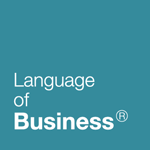While in France, I was very fortunate to meet Dr. Camille Baulant, one of the other professors on their faculty. She’s has just written a paper entitled “DEVELOPING A LEARNING FRAMEWORK: THE SYSTEMIC ‘LEARNING BY SHARING’ DIAMOND.” Below is the abstract both in English, and, of course, in French. If you would like contact information for Dr. Baulant, I’m happy to provide it.
ABSTRACT: Purpose – The main aim of the paper is to assess and design an innovative model based on systemic model of learning by sharing through a dynamic diamond of four differentiations of an organization (cooperation, competency, competition, knowledge) in order to enhance a collaborative knowledge sharing culture. Design/methodology/approach – Based on literature review it is developed a theoretical framework for understanding the key concept related to learning and integration of knowledge sharing, competence development and learning process in such a way that collaborative knowledge sharing becomes a part of the work culture and overcome the barriers to knowledge sharing. Findings – The sustainability of the processes undertaken in the novel conceptual framework of this research should ensure that organizational and individual knowledge are the subject to continue innovation. By integration of the four differentiations of an organization, individuals can improve their intelligence and competences by acquiring useful knowledge and understanding, which is the learning process. Originality/value –Although knowledge management literature is very wide spread, the concept of learning by sharing is quite less approached. This paper contributes through designing of a model based on learning strategy to enhance organizational knowledge sharing.
Keywords – learning by sharing, collaborative knowledge, collaborative learning, differentiations of an organization.La gestion des risques, présentée en théorie comme parfaitement scientifique, suit souvent en pratique un cycle inverse à celui préconisé, la réalisation du risque conditionnant les décisions prises. L’application de la théorie des perspectives de Kahneman et Tversky permet de comprendre pourquoi « tout change » lorsqu’une catastrophe survient. Le point de vue, via le point de référence, n’est plus le même. A titre d’exemple, ceci explique, les variations rapides des notations dans l’analyse du risque pays.




